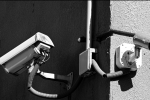December 30, 2013
Old Stories, New Light

As an adult, I haven’t been able to make it home every year, and my traditions have changed. This Christmas Eve, for example, I attended two services, neither of them the traditional Episcopal midnight service I’m used to. The first was a Christmas pageant/parade through Brooklyn with St. Lydia’s. We wore king’s crowns, donkey ears, and angel wings and sang carols and told the nativity story before ending up at a bar for snacks and drinks. It was fun, though very cold.
The second was a traditional Christmas Eve service at First Presbyterian, with a choir and candles in a warm church. Although it was not quite the Episcopal liturgy I’m used to, it was close.
Still, changing things up can be good for us, help us to see the story in a new way. During the pageant, I felt what a little of what it might be like to really anticipate finding a place to stay to get out of the cold, for example. Experiencing different ways of worship reminds me that Christmas is not only about my personal Christmas traditions (which I tend to get caught up in) but also a much larger story of death and resurrection, love and change.
Liturgies can become too familiar. They should both comfort and challenge us. They should tell the old stories of Christ’s birth and resurrection without flattening them out into nothing but motions through which we must go every year.
Experimentation can help us see our own liturgies in a new light, better understand why they appeal to us (or what problems they may have).
I don’t know what this experimentation might look like in every church or for every person. I think continuity and using the Book of Common Prayer are important parts of the Episcopal liturgy and help bind the church together. But I do believe it is helpful for leaders in the church, both lay and ordained, to expose themselves to new things, to help them see the old stories in a new light.





